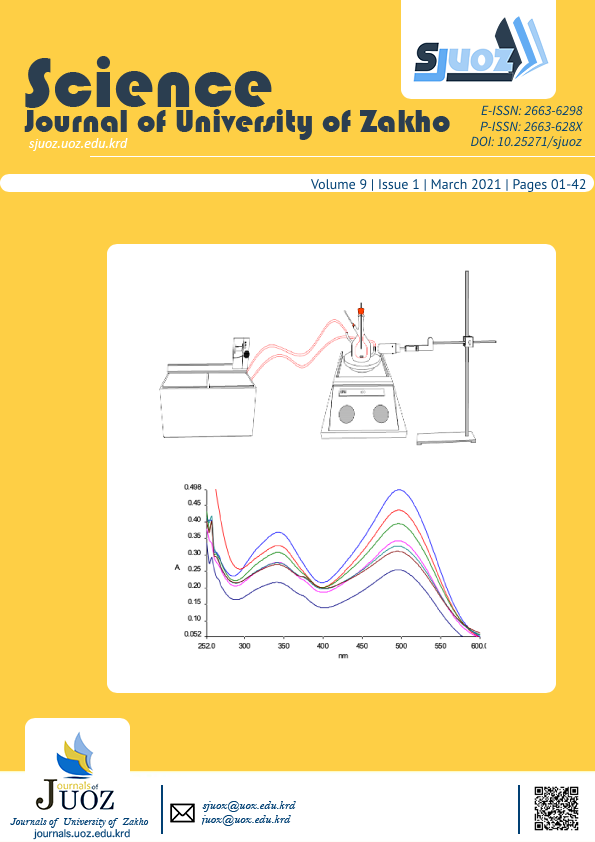Effect of Different Protein Sources with Different Levels on Growth Performance and Carcass Dissection of Japanese Quail (Coturnix Coturnix Japonica)
Abstract
The fish meal and soybean meal are the most used protein sources in poultry rations, especially in quail birds due to their higher requirements of crude protein that affecting their growth rate. The objective was to investigate the effect of source of dietary protein and its levels on growth traits, carcass characteristics and some blood parameters. This study was conducted at poultry farm in Duhok city/College of agricultural engineering sciences/Animal production Department/ Kurdistan Region- Iraq, 2020. A total of 360 one-day unsexed chicks of J. quail (Coturnix Coturnix Japonica) were divided equally into two groups (treatments) according to protein source (fishmeal and soybean meal groups), each group involved three levels of crude protein (20, 23 and 26 % CP), and each level had three replicates. The birds distributed randomly on the cages which contained 20 birds / replicate. The main results were as follow; fishmeal source of diet protein surpassed significantly soybean in live body weight (LBW), weight gain (WG), feed conversion ratio (FCR) and carcass characteristics. The level of 26 % crude protein (CP) in the diet recorded the best LBW, WG and FCR; while the level of 23 % CP surpassed both 20 % and 26 % in mortality rate and carcass dissections. However, total protein, hemoglobin and albumen parameters in the blood were not affected significantly (p>0.05) neither by protein source nor by its levels in the quail rations. As conclusion, fish meal was better than soybean meal; and 26 % CP was the best level.
Full text article
Authors
Copyright (c) 2021 Dejeen A. Mohammed, Jameela H. Salih, Shekhmous H. Hussen

This work is licensed under a Creative Commons Attribution 4.0 International License.
Authors who publish with this journal agree to the following terms:
- Authors retain copyright and grant the journal right of first publication with the work simultaneously licensed under a Creative Commons Attribution License [CC BY-NC-SA 4.0] that allows others to share the work with an acknowledgment of the work's authorship and initial publication in this journal.
- Authors are able to enter into separate, additional contractual arrangements for the non-exclusive distribution of the journal's published version of the work, with an acknowledgment of its initial publication in this journal.
- Authors are permitted and encouraged to post their work online.
